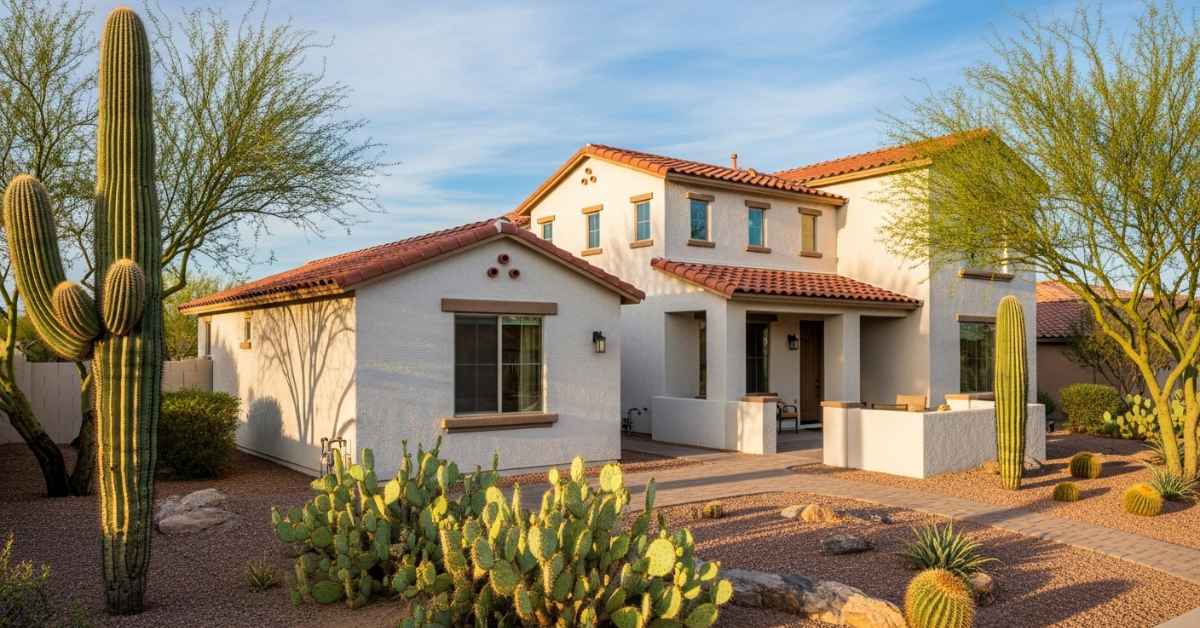The New American Household: How Multiple Generations Are Reshaping Housing

Remember the classic American dream? A young couple buys their starter home, upgrades to something bigger when kids arrive, and eventually downsizes when the nest empties. Well, according to Warren Buffett's Berkshire Hathaway HomeServices, that linear housing journey is being rewritten before our eyes.
Imagine coming home from work to find your father teaching your daughter his secret spaghetti sauce recipe in the kitchen. Your mother tends to her beloved houseplants on the patio, while your brother wraps up a business call in his upstairs office. This isn't the setting for a holiday gathering—it's Tuesday evening in millions of American households.
This scenario might sound chaotic to some, but for a rapidly growing number of families, multigenerational living has become not just a necessity but a preferred lifestyle choice. And according to real estate giant Berkshire Hathaway HomeServices, we're only seeing the beginning of this transformative housing trend.
The Numbers Tell the Story

The statistics paint a compelling picture. In 2010, approximately 5.1 million U.S. households were classified as multigenerational. By 2020, that number had grown to 6 million. Today, an estimated 59 million Americans—nearly one-fifth of the population—live in homes shared by multiple adult generations, and this figure continues to climb steadily.
When Pew Research Center first began tracking this trend, they noted that the 2008 financial crisis had accelerated what was then considered a temporary response to economic hardship. Yet instead of reverting to separate households as the economy recovered, the multigenerational trend has only gained momentum.
By 2025, Berkshire Hathaway projects that nearly 1 in 4 home purchases will be made with multigenerational living in consideration—a remarkable shift in how Americans think about housing.
Economic Forces Driving the Trend
The surge in shared family living isn't happening in a vacuum. Several powerful economic factors are converging to make this arrangement increasingly attractive:
Housing Affordability Crisis

Today's young adults face a housing market vastly different from what their parents encountered. The average Millennial or Gen Z worker earns approximately $10,000 less annually than their parents did at the same age when adjusted for inflation. Meanwhile, home prices have outpaced wage growth for decades, with the median home price-to-income ratio reaching historically high levels.
In cities like San Francisco, Los Angeles, and New York, entry-level homes often require more than 50% of a young professional's income—well above the 30% threshold financial experts consider affordable. When you add historically high interest rates to the equation, the math simply doesn't work for many would-be first-time buyers.
"For many young families, pooling resources with parents or in-laws isn't just smart—it's the only realistic path to homeownership in today's market," notes Jessica Morales, a Berkshire Hathaway HomeServices regional director.
The Elder Care Equation

On the other end of the age spectrum, seniors face their own housing challenges. Despite decades of retirement planning, many Baby Boomers have discovered that their savings fall short of covering long-term care needs, which can exceed $100,000 annually for assisted living facilities.
The COVID-19 pandemic also exposed vulnerabilities in institutional senior living arrangements, pushing many families to reconsider nursing homes and retirement communities. According to an AARP survey, nearly 90% of seniors express a preference to "age in place," remaining in a family setting rather than an institutional one.
My mother lived to 95 in her own home. It was in a "65 and older" community. My youngest brother and his family lived 5 minutes away, so they were her main caretakers. She didn't need much. In fact, her death resulted in her falling down while getting dressed to go to a party (slipping on one of her shoes), and she broke a hip. The surgery seemed to be a success, but she either bled out or had a heart attack (I've heard both stories).
She lived a long and happy life. Before she got into her house, she was temporarily renting an apartment in the same complex. She hated it - it was too small for her. She loved the house and because it had 3 bedrooms and 2 baths, we were able to stay with her when we visited since we lived in a different state.
Not every senior can live alone because of their needs, or they just don't want to. When adult children and their parents share housing costs, both generations often experience significant financial relief. The arrangement can reduce or eliminate mortgage payments for the younger generation while providing built-in support for aging parents—all while preserving family assets that might otherwise go toward institutional care.
Childcare Costs and the Grandparent Solution

For families with young children, childcare expenses have become increasingly burdensome. The national average cost for full-time daycare now exceeds $10,000 annually per child—more than in-state college tuition in many states.
Grandparents living under the same roof can provide not just occasional babysitting but consistent, reliable childcare. This arrangement saves thousands in childcare costs while fostering meaningful intergenerational relationships. Children raised with grandparents present show better emotional development and stronger family bonds, according to multiple studies.
Mark Johnson, who shares a Scottsdale home with his wife, two children, and his mother-in-law, explains: "My mother-in-law handles school pickup and afternoon activities while we're at work. We save over $15,000 a year on after-school care, and the kids get to grow up with their grandmother playing an active role in their lives."
The Remote Work Revolution

Perhaps no factor has accelerated multigenerational living quite like the widespread adoption of remote work. Prior to 2020, commuting requirements often dictated housing choices, making shared living arrangements impractical for working adults with different employment locations.
Now, with approximately 30% of the workforce working remotely at least part-time, geographic constraints have loosened considerably. Multiple working adults can share a home without sacrificing career opportunities or enduring lengthy commutes.
This flexibility allows families to consider locations that might have previously been impractical—like moving to more affordable suburban or rural areas where larger multigenerational properties are more attainable.
Designing the Multigenerational Home

As demand grows, so does innovation in home design. Architects, builders, and renovation experts are developing creative solutions to accommodate multiple generations comfortably under one roof.
Privacy Meets Togetherness

A casita (or ADU) to the left of a home in Scottsdale
The most successful multigenerational homes strike a delicate balance between shared space and privacy. Real estate professionals report that buyers are prioritizing:
- Separate entrances that allow family members to come and go independently
- In-law suites or accessory dwelling units (ADUs) that function as self-contained living spaces
- Soundproofing between living areas to reduce noise transfer
- Multiple primary bedroom suites, ideally on different floors
- Designated parking for multiple vehicles
"The key is creating zones within the home," explains architect Maria Sanchez, who specializes in multigenerational design. "You want common areas where everyone can gather, but also private retreats where individuals can maintain their independence and personal space."
We have a basement in our home, and our 40-something son has his office that is combined in a big L-shape, a bedroom (another bedroom is used as a guest bedroom for us or him), a bathroom, and the laundry room. He doesn't have a private entrance or full privacy, since we go down to do our laundry, which is really the only time we go down there. We all get along well, and for the most part, he does have more privacy than most setups.
Universal Design Features
With multiple generations in mind, thoughtful design elements can make homes more accessible and comfortable for all ages:
- Zero-step entrances that eliminate tripping hazards
- Wider doorways and hallways that accommodate wheelchairs and walkers
- Lever-style door handles instead of knobs for easier operation
- Walk-in showers with bench seating and grab bars
- Variable counter heights in kitchens to serve users of different abilities
- First-floor bedrooms that eliminate stair climbing for older adults
These features not only serve immediate family needs but also enhance long-term home value. As the population ages, universally designed homes will appeal to a broader market of buyers.
Flexible Spaces That Evolve
Smart multigenerational design acknowledges that family needs change over time. Spaces that can be repurposed as family dynamics shift have become particularly valuable.
"We're seeing demand for bonus rooms that can serve as a playroom when grandkids are young, then transition to a home office or hobby space as they grow," says Thomas Williams, a custom home builder specializing in multigenerational properties. "The most successful homes we build have flexibility built into their DNA."
Examples include basement apartments with separate entrances that can house returning adult children, then later serve as rental units for additional income; or garage conversions that function as grandparent suites but can be repurposed when needs change.
Investment Implications

For real estate investors and homeowners alike, understanding this demographic shift offers significant opportunities.
Property Value Enhancement
Homes with multigenerational potential command premium prices in today's market. Properties with features like:
- Finished walkout basements
- Guest houses or detached structures - we call them casitas here in Scottsdale and the greater Phoenix area
- Floor plans that can be easily sectioned for privacy
- Large lots that could accommodate additions
These properties often sell faster and at higher price points than comparable homes without multigenerational potential.
"We're seeing a 10-15% premium for homes with dedicated in-law suites or ADUs," reports Michael Chen, a Berkshire Hathaway real estate advisor in San Diego. "Buyers recognize the value immediately, whether they need the space for family now or appreciate the future flexibility."
Renovation Opportunities
For current homeowners, strategic renovations can dramatically increase property values while creating more functional living spaces for extended family.
Popular projects include:
- Converting garages into accessory dwelling units
- Finishing basements with separate entrances and kitchenettes
- Adding bathroom facilities to ground-floor dens or offices
- Installing separate HVAC zones for different living areas
These improvements typically recoup their costs at resale while providing immediate utility for multigenerational families.
The Future of Family Living

As Berkshire Hathaway's analysis suggests, the multigenerational living trend appears poised for continued growth. Homebuilders have taken notice, with major developers like Lennar, Toll Brothers, and KB Home introducing specific multigenerational floor plans to their offerings.
These purpose-built homes eliminate the need for costly renovations by incorporating separate living quarters from the start—complete with private entrances, kitchenettes, and living spaces that balance togetherness with independence.
Community planners are also adapting, with some municipalities revising zoning laws to accommodate ADUs and create more flexible housing options. These policy changes reflect recognition that housing needs have evolved beyond the traditional single-family model. Click the link to view Scottsdale ADU rules.
Looking ahead, experts predict that multigenerational living will continue reshaping not just individual homes but entire neighborhoods and communities. Developments may increasingly feature a mix of housing types within walking distance—allowing extended families to live near, if not with, one another.
Making the Transition
For families considering the multigenerational living leap, careful planning makes all the difference between a harmonious arrangement and a stressful one.
Financial advisors recommend creating clear agreements about expenses, property ownership, and household contributions before moving in together. These discussions, while potentially uncomfortable, prevent misunderstandings down the road.
"The most successful multigenerational households have open conversations about expectations early on," advises family therapist Dr. James Wilson. "When everyone understands their role and responsibilities, the arrangement is much more likely to succeed long-term."
Essential topics to discuss include:
- How household expenses will be divided
- Expectations around meals and shared activities
- Childcare responsibilities and boundaries
- Privacy considerations and house rules
- Long-term care plans for aging family members
- Exit strategies should living arrangements need to change
There is a reality of extended families living together. You all need to get along prior to the living arrangement. I'll repeat - set your rules if your children or parents are moving into your home. If you are getting a new home to house everyone, you still need to set rules and boundaries. It's probably going to be more difficult for any in-laws to feel as comfortable together as with parents and children (and even that can get tough). So consider all of these issues before moving in together. Have them written down and signed if necessary - it doesn't have to be done by an attorney, but this way everyone has a signed copy of what was agreed on.
Conclusion

The growing trend of multigenerational living represents more than just an economic response to housing costs—it signals a fundamental rethinking of how American families structure their households.
When Warren Buffett identifies this shift as a defining housing trend, it merits attention. Known for his long-view investment philosophy, Buffett's organization recognizes that multigenerational living addresses multiple contemporary challenges simultaneously: housing affordability, elder care, childcare, and the desire for stronger family connections.
For families willing to embrace this model, the benefits often extend far beyond financial considerations. Children develop deeper relationships with grandparents, working parents gain valuable support systems, and older adults remain engaged and purposeful—all while building equity in a shared asset.
As one multigenerational homeowner put it: "We didn't just solve our housing problem. We rediscovered what family living was meant to be all along."
Whether you're considering this arrangement for your own family or simply observing how housing trends evolve, one thing seems clear—the multigenerational household isn't just making a comeback. It's being reinvented for modern times, combining the wisdom of traditional family structures with innovative design and lifestyle arrangements suited for today's world.
One final note, you might not need to remodel the home or buy a larger place set up for multigenerational living. This can be a temporary situation to allow children to save their money (even if they pay rent to their parents) to be able to purchase their own home in the future.
Posted by Judy Orr on

Leave A Comment